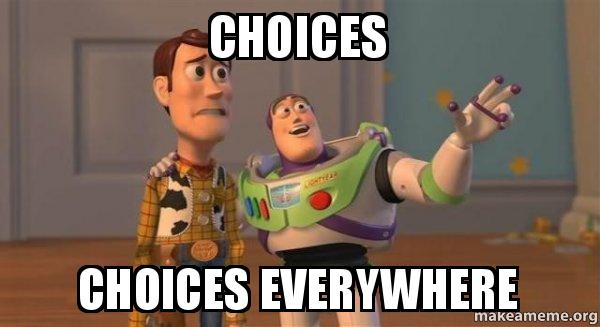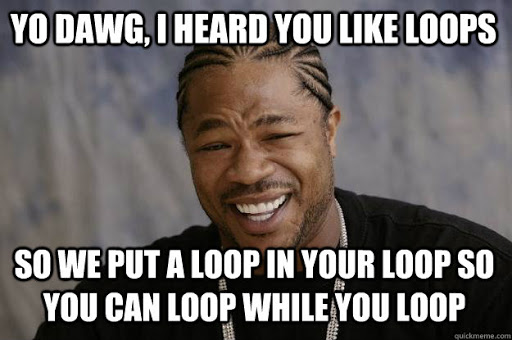class: center, middle, inverse, title-slide # Advanced R ## Chapter 5: Control flow ### Roberto Villegas-Diaz (<span class="citation">@villegar</span>) ### 2020-11-02 --- ## Overview 5.2 Choices - `if` ... `else` - `if` ... `else if` ... `else` - `ifelse` - `switch` 5.3 Loops - `for` - `while` - `repeat` --- ## 5.2 Choices .center[  ] ```r if (condition) true_action if (contition) true_action else false_action ``` --- ## 5.2 Choices (2) .pull-left[ __Test for `N` conditions__ __(Efficient way)__ ```r if (condition1) { true_action1 } else if(condition2) { true_action2 } # ... else if(conditionN) { true_actionN } else { false_action } ``` ] .pull-right[ __Test for `N` conditions__ __(don't do this, please)__ ```r if (condition1) { true_action1 } if(condition2) { true_action2 } # ... if(conditionN) { true_actionN } ``` ] --- ## 5.2 Choices (3) ### Example: Grades ```r grade <- function(x) { if (x >= 90) { "A" } else if (x >= 80) { "B" } else if (x >= 70) { "C" } else { "F" } } grade(99) ``` ``` ## [1] "A" ``` ```r grade(50) ``` ``` ## [1] "F" ``` --- ## 5.2 Choices (4) ### 5.2.1 Invalid inputs "The condition should evaluate to a **single** `TRUE` or `FALSE`". ```r if ("x") 1 if (logical()) 1 if (NA) 1 ``` Except, logical vectors of length > 1: ```r if (c(TRUE, TRUE, FALSE)) 1 ``` --- ## 5.2 Choices (5) ### 5.2.2 Vectorised `if` (aka `ifelse`) ```r x <- 1:5 ifelse(x %% 2 == 0, "even", "odd") ``` ``` ## [1] "odd" "even" "odd" "even" "odd" ``` -- ### Bonus: `dplyr::case_when` ```r dplyr::case_when( x %% 2 == 0 ~ "even", x %% 2 != 0 ~ "odd" ) ``` ``` ## [1] "odd" "even" "odd" "even" "odd" ``` --- ## 5.2 Choices (6) ### 5.2.3 Fancy "`if`-chain" (aka `switch`) .pull-left[ ```r x_option <- function(x) { if (x == "a") { "option 1" } else if (x == "b") { "option 2" } else if (x == "c") { "option 3" } else { stop("Invalid value") } } ``` ] .pull-right[ ```r x_option <- function(x) { switch(x, a = "option 1", b = "option 2", c = "option 3", stop("Invalid value")) } legs <- function(x) { switch(x, cat = , dog = 4, human = 2, stop("Invalid value")) } ``` ] .footnote[ If multiple inputs have the same output, the RHS can be empty. ] --- ## 5.2 Choices (7) ### 5.2.4 Exercises * What type of vector does each of the following calls to `ifelse` return? ```r ifelse(TRUE, "yes", "no") ifelse(FALSE, "yes", "no") ifelse(NA, "yes", "no") ``` * Why does the following code work? ```r x <- 1:10 if (length(x)) "not empty" else "empty" ``` ``` ## [1] "not empty" ``` -- ```r x <- numeric() if (length(x)) "not empty" else "empty" ``` ``` ## [1] "empty" ``` --- ## 5.3 Loops .center[  ] ```r for (item in vector) perform_action while(condition) action repeat(action) ``` --- ## 5.3 Loops (2) ### `for` loops ```r for (i in 1:3) { print(i) } ``` Terminate loop: - `next` exists current iteration ```r for (i in 1:10) { if (i %% 2 == 0) next print(i) } ``` -- ``` ## [1] 1 ## [1] 3 ## [1] 5 ## [1] 7 ## [1] 9 ``` --- ## 5.3 Loops (3) Terminate loop (cont.): - `break` exits the entire loop ```r for (i in 1:10) { if (i %% 5 == 0) break print(i) } ``` -- ``` ## [1] 1 ## [1] 2 ## [1] 3 ## [1] 4 ``` --- ## 5.3 Loops (4) ### 5.3.1 Common pitfalls - Preallocate the output container (_performance_) ```r means <- c(1, 50, 20) out <- vector("list", length(means)) ``` - Instead of iterating over `1:length(x)`, use `seq_along(x)` ```r means <- c() 1:length(means) ``` ``` ## [1] 1 0 ``` ```r seq_along(means) ``` ``` ## integer(0) ``` --- ## 5.3 Loops (5) ### 5.3.2 Related tools Flexibility: `for < while < repeat` .pull-left[ ```r i <- 0 while (i < 10) { i <- i + 1 if (i %% 2 == 0) next print(i) } ``` ``` ## [1] 1 ## [1] 3 ## [1] 5 ## [1] 7 ## [1] 9 ``` ] .pull-right[ ```r i <- 0 repeat({ i <- i + 1 if (i > 10) break if (i %% 2 == 0) next print(i) }) ``` ``` ## [1] 1 ## [1] 3 ## [1] 5 ## [1] 7 ## [1] 9 ``` ] --- ## 5.3 Loops (6) ### 5.3.3 Exercises * Why does this code succeed without errors or warnings? ```r x <- numeric() out <- vector("list", length(x)) for (i in 1:length(x)) { out[i] <- x[i] ^ 2 } out ``` * When the following code is evaluated, what can you say about the vector being iterated? ```r xs <- c(1, 2, 3) for (x in xs) { xs <- c(xs, x * 2) } xs ``` --- ## 5.3 Loops (7) ### 5.3.3 Exercises * What does the following code tell you about when the index is updated? ```r for (i in 1:3) { i <- i * 2 print(i) } ``` --- ## Conclusion Can we put these concepts together in diagram form? Let’s work on improving these schematics! .center[  ] --- ## Quiz * What is the difference between `if` and `ifelse()`? * In the following code, what will the value of `y` be if `x` is `TRUE`? What if `x` is `FALSE`? What if `x` is `NA`? ```r y <- if (x) 3 ``` `x = TRUE` ```r if (TRUE) 3 ``` ``` ## [1] 3 ``` -- `x = FALSE` ```r if (FALSE) 3 ``` -- `x = NA` ```r if (NA) 3 ``` --- * What does `switch("x", x =, y = 2, z = 3)` return? -- ```r switch("x", x =, y = 2, z = 3) ``` ``` ## [1] 2 ```